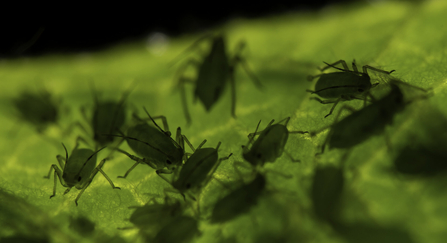What is it?
IPM aims to prevent and manage pests in your crops by developing a strategy to minimise use of chemical pesticides including crop rotations, altering the crop variety that is grown, targeted pest control, adjusting cultivation practices and nature based IPM. Nature based IPM encourages natural predators to live in and around your productive area that target the pest species. Establishing and maintaining habitats such as beetle banks, strips of tussocky grass, field margins or hedgerows can provide feed, shelter, and nesting sites for multiple predatory species.
Benefits for farmers:
-
Pesticide usage can be reduced as more natural control is taking place meaning a reduction in the input costs of that crop as well as in the labour and fuel spent on spraying.
- Pest control without reliance on chemicals means that issues around pesticide resistance are resolved.
Benefits for wildlife:
-
Pesticides can have adverse effects on wildlife and reduce pollinator numbers. Reducing pesticides will reduce these negative effects.
- Using pesticides also risks polluting water courses through spray drift and run-off, and so reducing pesticides can improve water quality.
- Establishing and maintaining areas to encourage natural predators also creates food and shelter for other species on your land.
Points to consider:
-
Setting land aside for establishment of habitats to support IPM can mean taking land out of production and therefore a reduction in yield. This needs to be considered carefully and weighed up against the benefits of reducing costs and boosting beneficial species.
- Monitoring and recording beneficial insect species and pest species can help you to plan the right strategy for your crop.
Useful resources:

Jon Hawkins – Surrey Hills Photography
